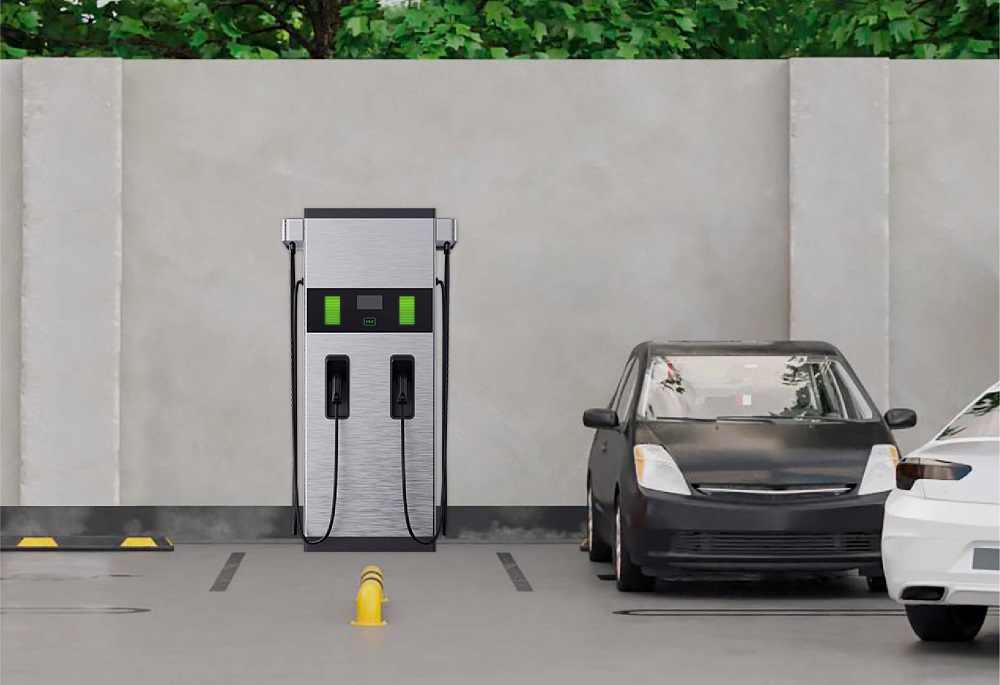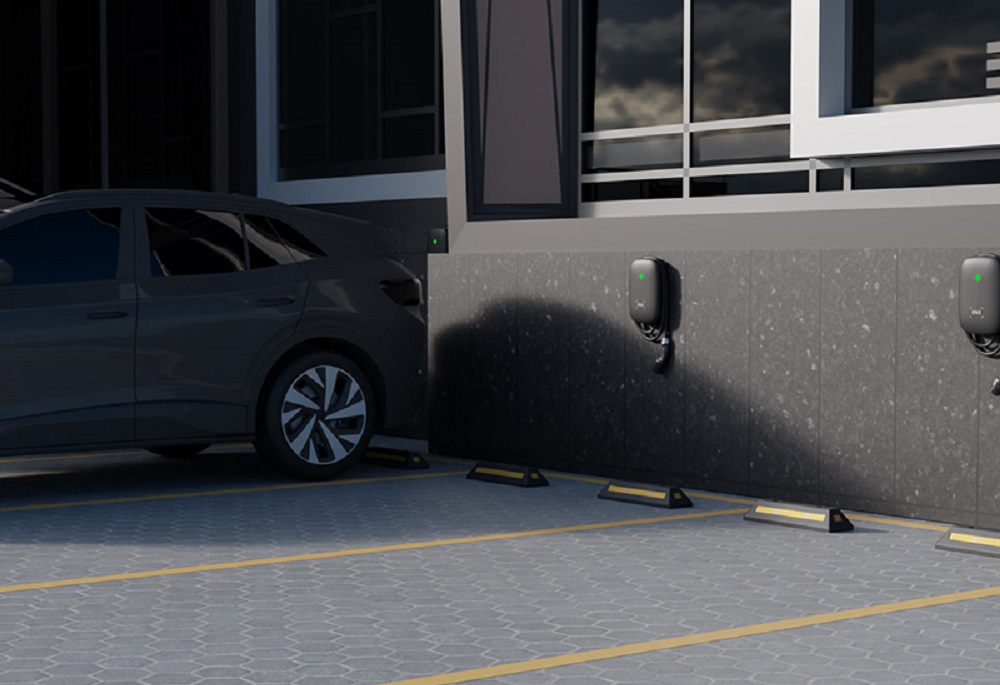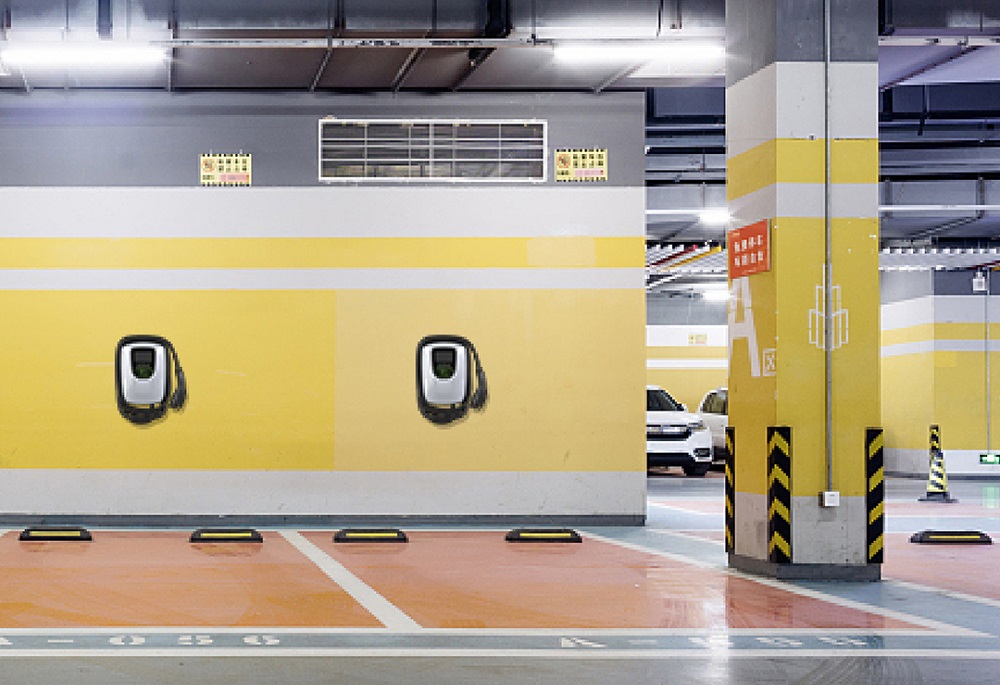
Nowadays, electric vehicles (EVs) have become a hot topic, and more and more people are considering purchasing an electric vehicle, but "range anxiety" has become a nuisance for buyers. This anxiety stems from uncertainty about the range of electric cars and the inconvenience of charging facilities. As technology advances, EV charger wholesalers are applying more innovative charging technologies to the EV charging infrastructure. Innovative EV charging technologies for EV charging infrastructure are gradually breaking down range anxiety and ushering in more people's confidence in driving EVs. In this article, we will delve into the causes of range anxiety and practices to break it.
What is Range Anxiety?
Range anxiety refers to electric vehicle owners' concerns and uncertainty about battery range, as well as worries about the availability and convenience of charging facilities. This anxiety usually manifests itself in concerns about long-distance traveling, where people worry that they won't be able to find an EV charging station while on the road, thus affecting their driving plans. Range anxiety is also a psychological dimension that affects the confidence of more potential EV owners to choose an EV.
Five Reasons for Range Anxiety
Limitations of battery technology:
The range of EVs is largely limited by the level of development of battery technology. However, the fundamental problem with short EV range lies in the many constraints of current lithium-ion battery technology. One of the primary challenges is the energy density of the battery, which is currently relatively low and has a relatively slow charging rate, resulting in a relatively limited driving range that can be provided by a single charge.
Although some progress has been made in recent years regarding the improvement of cathode and anode materials and the optimization of electrolytes, the relatively limited energy density of batteries restricts the ability to store more electrical energy in a limited space. Therefore, novel battery technologies, such as solid-state batteries based on sulfides or oxides, have been extensively investigated to increase the energy density of batteries and thus significantly improve the range performance of electric vehicles.
Charging speed is another key constraint on EV range performance. Conventional lithium-ion batteries are slow to charge, which is mainly limited by the rate of reaction within the battery. The development of fast charging technology involves optimizing the conductivity of the battery materials and the electrode structure to increase the charging speed. At the same time, an effective thermal management is required to prevent the heat generated during charging from affecting the battery.
In terms of battery life, charge cycle, and capacity degradation, these are key issues. The charge cycle of a battery is affected by the number of charging and discharging cycles, while capacity degradation causes the battery to gradually lose its maximum capacity. To address this issue, in-depth research on the stability of battery materials is needed to achieve longer-lasting electrodes and electrolytes and greater battery capacity.
Inadequate charging infrastructure:
The growth in market demand for EVs is outpacing the construction of charging infrastructure, resulting in an imbalance between supply and demand. The ratio of EVs to charging stations in India will be about 135:1 in 2023, (about 1 charging station for every 135 EVs). In the US, plus 1,874 charging stations in Washington, with 104,050 registered electric vehicles, the ratio of EVs to EV charging stations is 55:1.
The lack of charging infrastructure leads to users facing difficulties in finding available charging stations when they need to charge, especially during emergencies or long trips, which reduces the convenience of EV use. Uneven distribution of charging stations may also make it more difficult for users in certain areas to access convenient charging services, increasing users' charging time.
Longer charging times:
The charging time for EVs is relatively long compared to the refueling process for conventional fuel vehicles. At a traditional petrol station, it takes only a few minutes to fill up a vehicle. The charging time with an EV is usually a few minutes to a few hours. Even with DC fast-charging technology, users may be inconvenienced by the longer charging time, especially if they are pressed for time, which is a major cause of mileage anxiety. In the following, I will visually express the charging time of level 1, level 2, and level 3 EV chargers through data.
EV charging time is light to the type and power of the EV charger, while the calculation of charging time involves the charging rate of the EV battery and the power of the EV charging post. Typically, the charging time can be approximated by the following:
Level 1 chargers (common home AC chargers):
Level 1 chargers (AC chargers) typically provide about 2–5 kilowatts (kW) of power. For a 150-kWh electric van, the charging time with a Level 1 charger can be calculated using the following formula:
Charging time (hours) = Battery capacity (kWh) / Charging post power (kW)
Assuming a Level 1 charger with 3 kW is used:
Charging time = 150 kWh / 3 kW = 50 hours
Therefore, with a Level 1 charger, charging a 150-kWh electric van may take approximately 50 hours.
Level 2 chargers:
Level 2 chargers are typically between 7 and 22 kW. Let's assume a 10 kW Level 2 charger is used:
Charging time = 150 kWh / 10 kW = 15 hours
With a Level 2 charger, charging a 150 kWh electric van may take approximately 15 hours.
DC fast chargers (level 3 EV chargers):
Rapid EV chargers are usually much higher in power than Level 1 and Level 2 chargers, commonly 50 kW, 150 kW, 180 kW, etc. Let's assume a 180 kW fast charger is used:
Charging time = 150 kWh / 180 kW = 0.833 hours (i.e. 50 minutes)
Using a Level DC 180 kW rapid charger, charging a 150 kWh electric van may only take approximately 50 minutes.
It is important to note that the actual charging time may be affected by factors such as the efficiency of the charging system, the battery management system, and the temperature of the battery during charging.

Ambient temperature:
Cold weather has an impact on EV range, which can be reduced by anywhere from 10 to 30 percent.
In cold weather, the EV range is affected in several ways. Firstly, reduced battery efficacy is one of the main factors, as cold temperatures slow down the rate of chemical reactions within the battery, reducing the efficiency of discharging and charging the battery and therefore reducing the amount of energy available. Secondly, to keep the interior warm, electric vehicles need to activate the heating system, and this additional energy consumption directly reduces the available power, further decreasing range performance. In cold conditions, the hardening of tires increases rolling resistance, and the increase in air density leads to greater air resistance, both of which directly affect the energy efficiency and range of EVs.
Additionally, extremely hot weather can affect battery efficiency and life. In extremely cold conditions, battery charging may slow down, while in extremely hot conditions, battery life may be shortened.
How to Break EV Range Anxiety
Boosting Electric Vehicle Range
To address range anxiety, electric vehicle manufacturers have made significant progress in technological innovation. Not only have they continued to improve battery technology to increase the energy density and charging efficiency of batteries, but they have also effectively increased the range of EVs through lightweight design and optimization of vehicle aerodynamics. This technological innovation not only allows users to drive long distances with greater confidence but also lays a more solid foundation for EV charging solutions.
Advances in fast-charging technology
To increase charging speeds, many EV charger dealerships are committed to developing fast charging technology. The popularity of high-power DC fast charging stations has significantly reduced the charging time of EVs. This technological advancement effectively alleviates range anxiety during long journeys, making users more willing to choose electric vehicles. Innovative DC fast charging solutions provide a more convenient option for EV charging.
Construction of charging station networks and smart charging services
Providers of electric vehicle charging solutions are actively involved in the construction of charging station networks. In cooperation with the government, enterprises, and others, they have gradually built a network of charging stations covering cities, highways, and villages, effectively increasing the availability of charging stations.
Meanwhile, smart charging services provide users with real-time charging advice through cloud-based technology that monitors real-time information such as charging station usage and load on the power network. This comprehensive effort not only provides users with more charging options but also lays a solid foundation for the sustainable development of the EV industry.
Mobile EV Charger: Charging Electric Vehicles at Anytime
A "mobile charger" usually refers to a portable mobile EV charging device, similar to a smartphone's rechargeable battery, but designed to provide charging services for EVs. As an innovative charging solution introduced by many EV charger wholesalers, portable EV charging stations are usually small in size and portable enough to be carried around to provide mobile ev charging service for EVs in emergencies or where there is a lack of fixed charging facilities.
These mobile chargers typically contain a battery of a certain capacity, which is connected to the EV via cables and adapters to charge it. Some designs may also allow users to select different charging ports to accommodate different models of electric vehicles.
Mobile EV chargers as a portable charging solution can alleviate EV range anxiety to a certain extent. Firstly, it provides a means of emergency charging for EVs, especially if the user finds that there is a lack of charging facilities in the vicinity, and can quickly provide electrical support. This increases the user's flexibility and makes it easier to cope with unknown or lack of fixed charging infrastructure.
However, there are some limitations to mobile chargers. Secondly, the slow charging speed and limited capacity may not meet users' needs for fast, long-distance charging. When traveling long distances or driving over large distances, mobile chargers may only be able to provide a limited range, which may be limited to users' practical needs. In addition, the high cost of mobile chargers may also be a consideration for users, especially for long-term use or frequent charging.
All in all, mobile electric car chargers are a portable backup solution to provide emergency charging for EVs, which may provide convenience in some special situations. However, to more comprehensively alleviate EV range anxiety, there is still a need for a more complete and extensive fixed charging infrastructure to provide a more convenient and efficient charging experience.

Developing EV charging infrastructure
Developing EV charging infrastructure has significant benefits for breaking down range anxiety, which include increasing user confidence, driving EV market growth, reducing environmental impacts, and facilitating the development of innovative technologies.
The development of charging infrastructure improves the confidence of electric vehicle users. A wider and more accessible charging network means that users are more likely to find public EV charging stations and charge when they need to. This reduces users' concerns about lack of range and alleviates mileage anxiety, making more people willing to consider purchasing an EV.
Second, improved charging infrastructure is critical to the growth of the EV market. Users' demand for charging convenience is one of the important factors in car purchase decisions. The improvement of charging infrastructure will expand the use of electric vehicles, attract more potential users, and drive the growth of the entire electric vehicle market.
In addition, the development of EV charging infrastructure will also help drive the innovative development of the entire EV ecosystem, providing smarter and more sustainable transport solutions for the future.
Overall, through the development of EV charging infrastructure, we can not only effectively break the range anxiety, but also promote the development of the EV market, reduce the burden on the environment, and facilitate the continuous emergence of innovative technologies. This is an important step in the shift towards more sustainable and smarter mobility.
In recent years, many governments have introduced incentives to develop charging infrastructure.
Electric vehicle charging infrastructure incentives in the UK:
In the UK, the 'Workplace Charging Scheme' policy (WCS) encourages businesses to install chargers in the workplace for their employees (who can charge for free), while individuals are encouraged to install chargers at home through the "Electric Vehicle Homecharge Scheme"encourages individuals to install charging equipment in their homes.
Electric Vehicle Charging Infrastructure Incentives in the United States:
The U.S. National Electric Vehicle Infrastructure Formula programme will be used to build Alternative Fuel Corridors (AFCs), designed to create a DC fast charger every 50 miles along a national highway. "The Federal Tax Credit (AFITC)" provides tax credits of up to $100,000 for installations in scenarios such as multi-family buildings, commercial car parks, workplaces, and municipal transit agencies.
Make a sensible charging plan
To overcome range anxiety, you need a proper charging plan. In your daily life, plan your charging schedule according to the actual usage of your vehicle to ensure that the battery is always maintained at a high charge level. This preventive charging plan can greatly alleviate the user's concern about insufficient charging while traveling and improve the convenience of charging.

Use emergency charging equipment
Many EVs are equipped with emergency charging tools, such as emergency charging cables or mobile EV chargers. These devices can usually be plugged into a regular household power source or a specific charging outlet, allowing the vehicle to be charged for a short period of time. While this is a relatively slow charge, it can provide enough power to travel to the nearest charging station in an emergency.
Towing Service:
A towing service is an effective solution in the event of running out of power. Users can contact a professional towing service to tow their vehicle to the nearest charging station or car repair station. Towing service providers are usually able to provide users with charging services or deliver the vehicle to a reliable charging facility.
Find a temporary electric vehicle charging station
Temporary charging stations may be available in some areas, especially in cities where the EV market is maturing. These charging stations may be temporary, such as mobile charging stations or charging facilities at specific event locations. Users can find this information through sources such as mobile apps or local EV associations.
Contact the EV company or service provider
Some Electric vehicle charger providers or service providers offer emergency charging services. Users can obtain information about charging assistance through the contact information provided in the vehicle manual or by calling the relevant hotline.
Conclusion
By analyzing the causes of range anxiety in depth, it is easy to see that the root of this problem lies in several factors, including limitations in battery technology, inadequate charging infrastructure, and relatively long charging times. However, these problems are gradually being solved through technological innovation by EV charger dealers and the improvement of charging infrastructure. With the development of technology and the progress of the industry, we believe that electric vehicles will gradually become a more common and reliable means of transport, making a greater contribution to environmentally friendly travel.
Post time: Jan-10-2024
